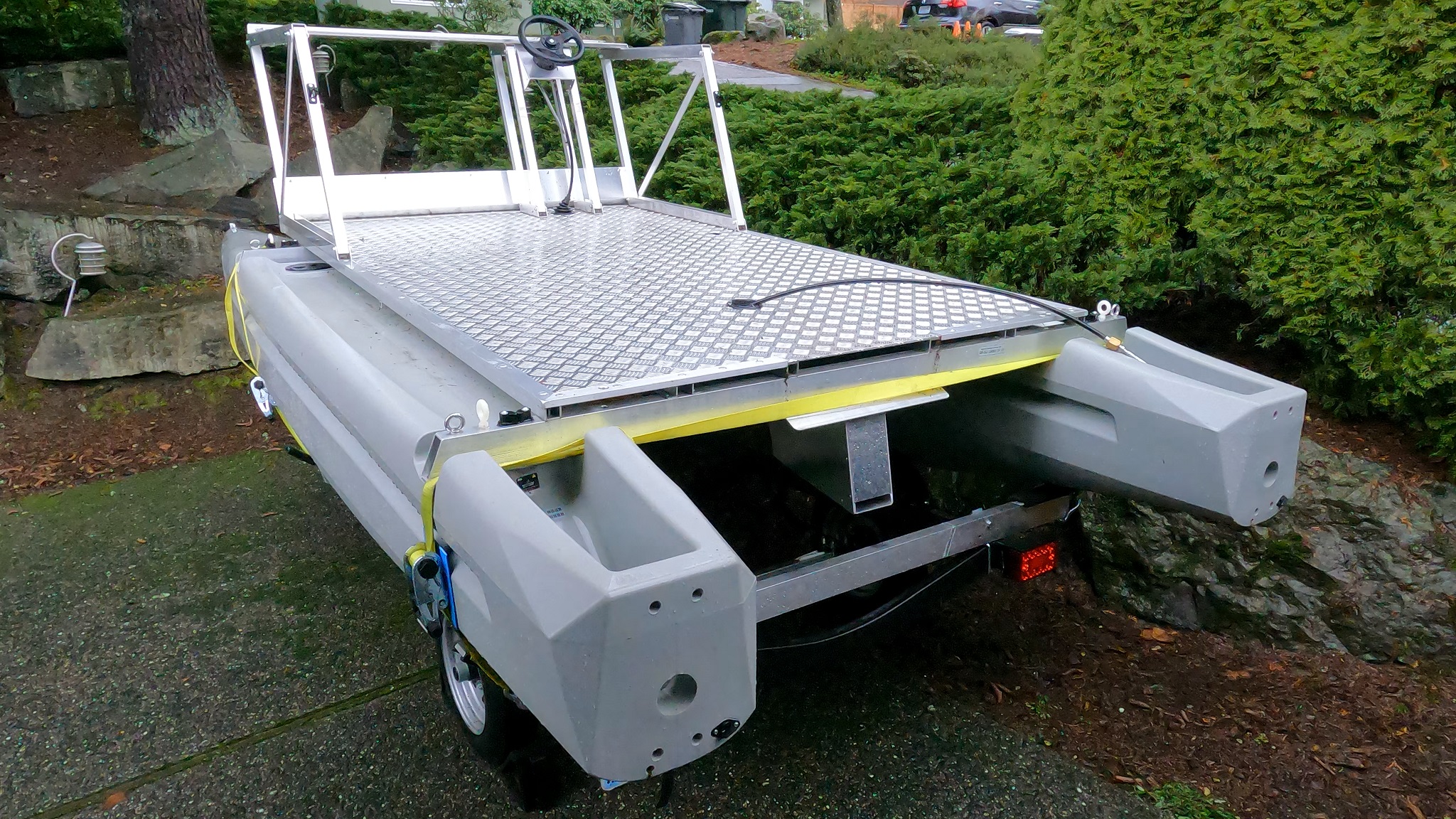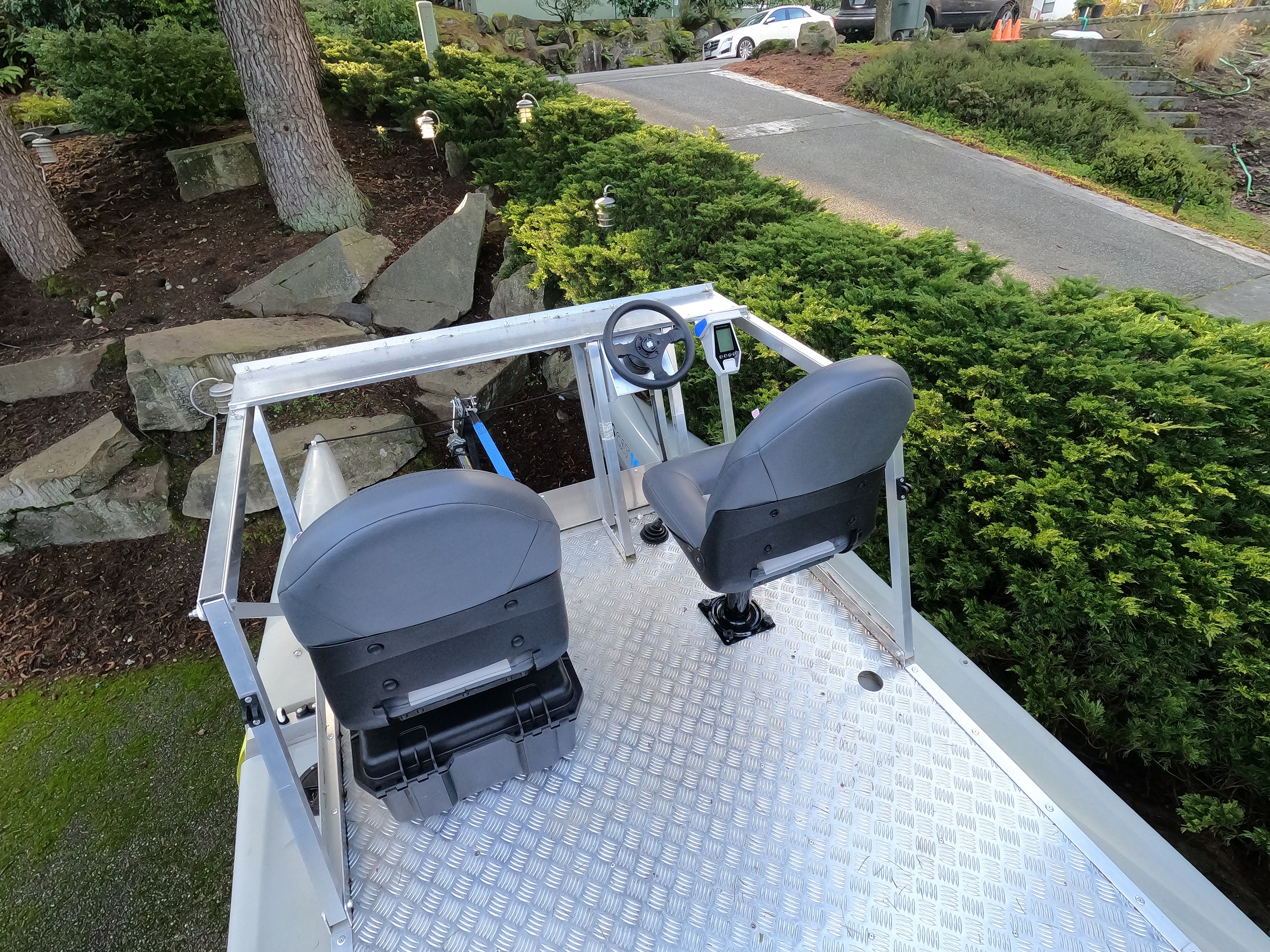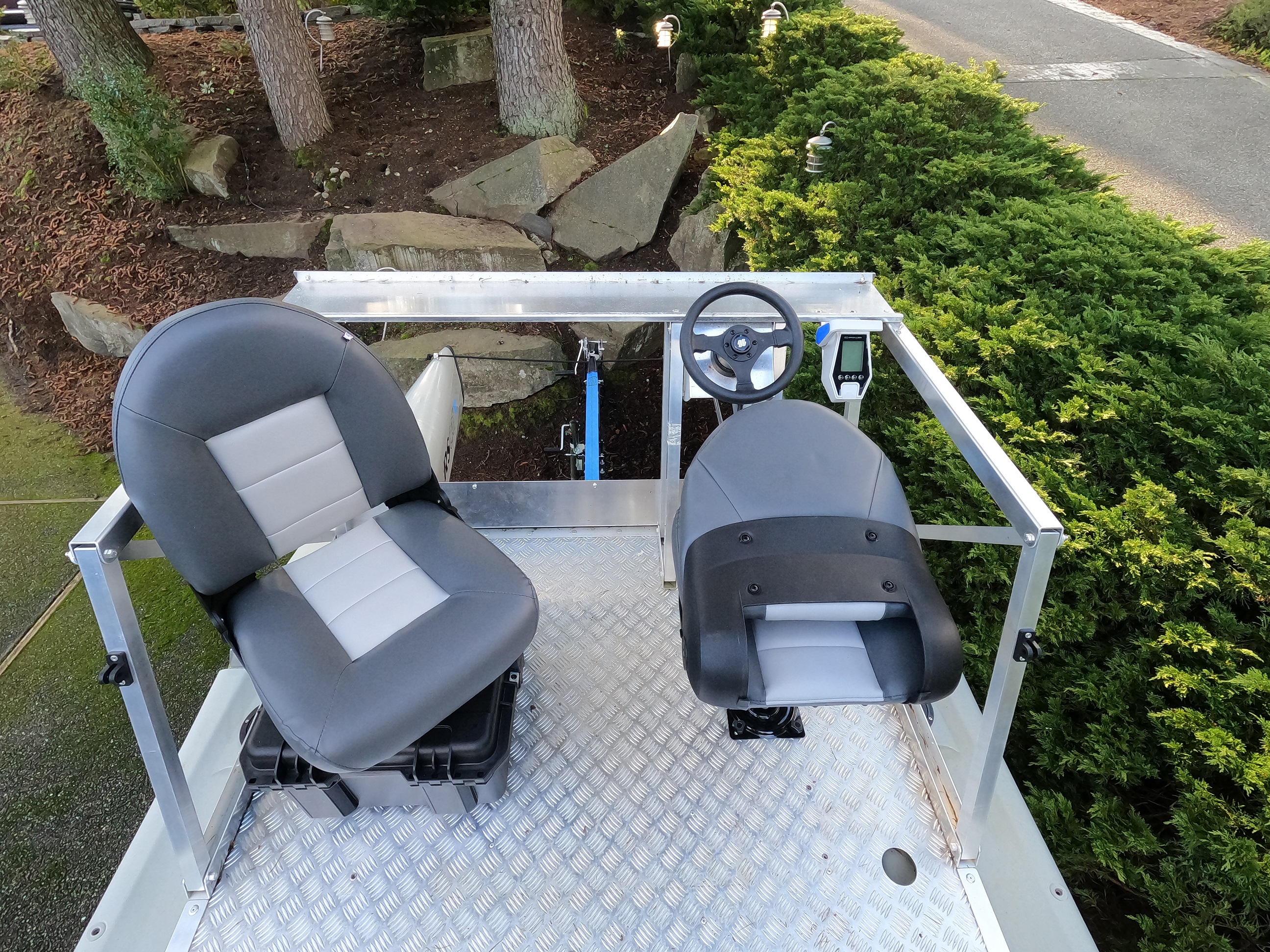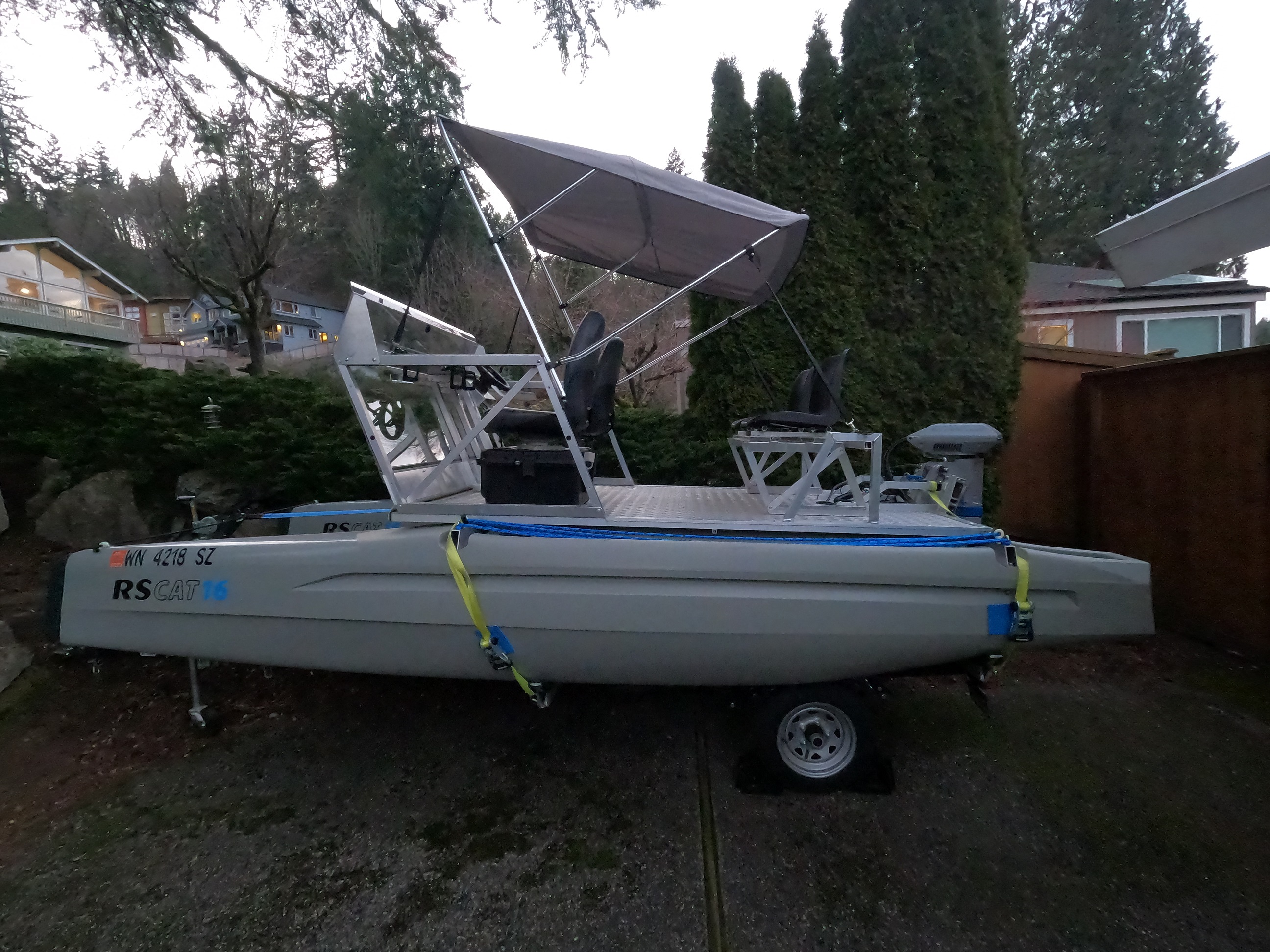Hi Jeff, the outer case is attached to the deck. There's a hole in the center of the bottom of the case, and I've installed rivet nuts at several locations on the deck, to allow different locations for the battery. A threaded-stud knob and an oversize washer allow tool-less installation and removal of the case to/from the deck. EDIT: there are also rubber pads on the corners of the bottom of the case, which help keep it from rotating (that and the weight of the battery cells).
I don't have the best seal around those power posts that protrude through the case list. We tend not to go out in the rain. If that changed, I'd consider some kind of hinged lid over that area that's open to the rear for the cables to exit. I also have some rubber grommets that might create a decent seal, but of course would need to increase the hole diameters in the case lid, and I'm not ready to move in that direction yet. For storage in the rain I have a box-shaped tarp that just fits over the case.
The four modules are each built from four 3.2V-nominal 200Ah LFP cells. Cost is not that bad when you get them straight from the manufacturer, but there is usually a multi-month shipping time going that route.










